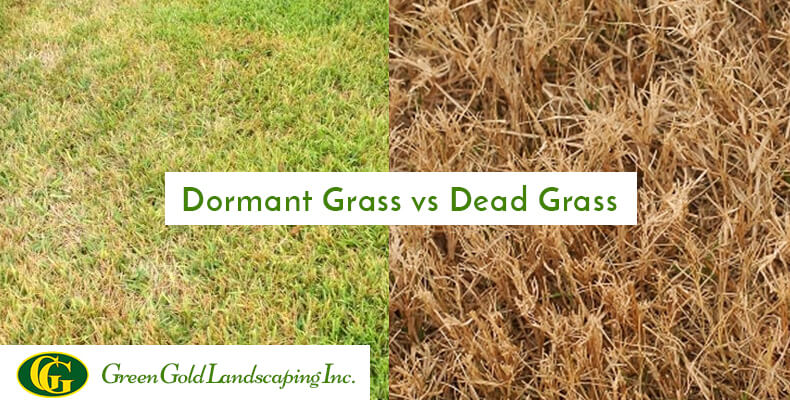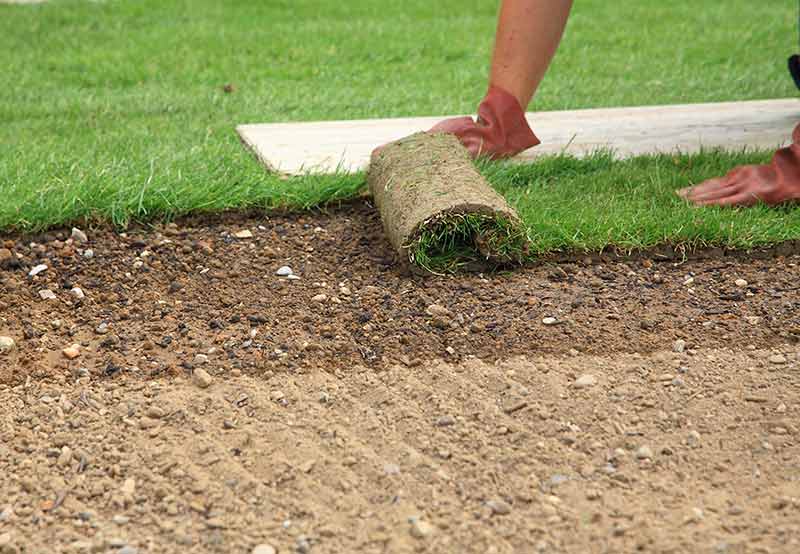Sod can be identified as dead by observing its color and texture.

Credit: www.greengoldlandscapinginc.com
How to Know If Sod is Dead: Step by Step Guide
Withered Appearance
Sod can exhibit a withered appearance, often displaying a yellow or brown color. Its texture may become brittle.
Lack Of Growth
Determining if sod is dead can be done by observing its lack of growth. If it remains unresponsive to regular watering and fertilization, then it may indicate that the sod is dead. One sign to look out for is the absence of new shoots or blades.
This can be an indication that the sod has lost its vitality and is no longer able to grow. By closely monitoring its responsiveness to maintenance efforts, you can determine whether the sod is deceased or if it still has the potential to rejuvenate.
Keep a close eye on its progress to ensure its health and vitality. Regular care and observation will help you identify the signs of a dead sod and take the necessary steps for its restoration.
Pull Test
Determining whether sod is dead can be done through a pull test. By gently tugging on the sod, you can check for any resistance. If the sod easily lifts with no resistance, it may be an indication that the roots have become loosened or completely disconnected.
This can happen due to various reasons, such as improper installation, lack of water, or pests. Without healthy roots, the sod cannot obtain the necessary nutrients and moisture to survive. Therefore, if your pull test reveals no resistance, it is likely that the sod is dead.
To maintain a vibrant and lush lawn, it is important to regularly inspect and care for your sod, ensuring its roots are firmly established. So keep an eye out for any signs of loosened or disconnected roots to prevent your sod from dying.
Insufficient Watering
Sod can show signs of being dead due to insufficient watering. Underwatering can manifest as dry, brittle patches while overwatering can cause the sod to become soggy and develop an unpleasant smell. Lack of proper hydration can lead to discoloration, wilting, and an overall unhealthy appearance.
It is essential to find the right balance and ensure that the sod receives an adequate amount of water to maintain its health. Monitoring the soil moisture levels, using a moisture meter, and adjusting the watering schedule accordingly can help prevent sod from dying.
Additionally, proper drainage and sunlight exposure are crucial factors in maintaining the vitality of the sod. By understanding and addressing the issues related to insufficient watering, you can determine whether or not your sod is dead and take appropriate action to revive it if necessary.
Soil Issues
If you notice poor drainage in your yard, it could be a sign of soil issues. Compacted soil is a common problem that prevents water from properly draining. When the soil becomes compacted, it creates a barrier that restricts water movement, leading to waterlogged spots in your yard.
To determine if your sod is dead, check for signs of poor drainage. If water is pooling or taking a long time to drain, it could indicate dead sod. Additionally, look for areas where the sod has turned brown or is no longer growing.
These are signs that the roots may be dead and unable to absorb nutrients and water. Regular maintenance and aerating the soil can help prevent compaction and improve drainage in your yard.
Disease And Pests
Sod, like any living plant, can become infested with diseases and pests. Fungal diseases, for instance, can lead to discoloration and decay of the sod. Signs of these diseases include patches of brown or yellow grass and the presence of mold or mushrooms.
Insect infestations, on the other hand, can cause wilting, yellowing, or thinning of the sod. Common pests that attack sod include grubs, chinch bugs, and sod webworms. If you notice any of these symptoms, it’s important to take action promptly.
Treatments for fungal diseases may involve applying fungicides or adjusting watering practices. Insect infestations often require the use of insecticides or biological control methods. By closely monitoring the health of your sod and taking preventive measures, you can keep it vibrant and free from disease and pests.
Soil Preparation
Proper soil preparation is essential to determine if sod is dead. Aeration is a key step in soil preparation. By aerating the soil, you create small holes that allow air, water, and nutrients to reach the roots of the sod.
This promotes healthy growth and helps determine if the sod is still alive. Soil amendment is another important aspect of soil preparation. Adding organic matter or compost to the soil can improve its quality and provide the necessary nutrients for the sod to thrive.
Regularly amending the soil also helps in assessing the condition of the sod. By following these soil preparation techniques, you can accurately determine if sod is dead or it has the potential to recover and grow into a healthy, vibrant lawn.
Reseeding Or Replacing
Knowing if sod is dead or not is crucial when it comes to maintaining a healthy lawn. Reseeding or replacing it is a common solution. One method is overseeding with new sod, which involves spreading fresh grass seed over existing sod to fill in any bare or dead areas.
Another option is to install completely new sod, removing the old one and replacing it entirely. Assessing the condition of the sod is important before deciding which approach to take. Look for signs of discoloration, thinning, or lack of growth.
Additionally, check for pests or diseases that may have contributed to the sod’s death. By observing these indicators, you can determine the best course of action to revive your lawn.
Proper Watering And Maintenance
Sod can show signs of being dead if it is not properly watered and maintained. A well-established watering schedule is essential for the health of the sod. Regular and adequate watering helps the sod stay hydrated and prevents it from drying out.
Additionally, proper maintenance such as mowing and fertilizing contributes to its vitality. Mowing the sod at the recommended height ensures that it stays even and reduces the risk of pests and diseases. Fertilizing provides the necessary nutrients for the sod to grow and thrive.
By following these guidelines, you can ensure that your sod remains healthy and vibrant, avoiding the possibility of it dying off.
Correct Watering Habits
Watering habits are crucial in determining whether sod is still alive or dead. Consistency and adequacy play a vital role in maintaining its health. Adjusting the watering schedule based on the weather conditions is equally important. Too much water or prolonged dry spells can be detrimental to the sod’s survival.
By closely monitoring the moisture levels, you can ensure that the sod receives the right amount of water it needs to thrive. This is particularly significant during the establishment phase, as newly laid sod requires more frequent watering. Remember, maintaining appropriate watering habits will help you determine if the sod is still alive or in need of replacement.
Keep a close eye on the sod’s appearance and respond accordingly to ensure its vitality.
Proper Soil Management
Proper soil management is essential in determining the health of your sod. Evaluating and adjusting the soil pH should be a priority. Regular maintenance practices like aeration and dethatching also play a crucial role. These practices promote healthy root growth and ensure that your sod receives adequate nutrients and water.
By testing the soil pH, you can assess if it is within the optimal range for healthy sod growth. Adjusting the pH levels if necessary will help create the ideal conditions for your sod to thrive. Additionally, regular aeration and dethatching help prevent soil compaction and allow for better water and nutrient absorption.
Managing the soil properly is a key factor in determining the vitality of your sod.
Disease And Pest Control
Regular inspection and treatment are essential for effective disease and pest control in your sod. By regularly inspecting your sod, you can identify any signs of disease or pest infestation early on. This allows you to take prompt action to treat the problem before it spreads and causes further damage.
Implementing preventive measures, such as using disease-resistant sod varieties and applying appropriate pesticides, can also help to prevent the occurrence of common diseases and pests. It is important to stay vigilant and proactive in order to maintain the health and vitality of your sod.
Regularly monitor your sod for any changes or abnormalities, and consult with a professional if you are unsure about the best course of action to address any issues.
Frequently Asked Questions For How To Know If Sod Is Dead
Will Sod Come Back If It Dies?
Yes, sod can grow back if it dies. Proper care, watering, and maintenance can revive it.
How Do I Know If My Sod Is Dormant Or Dead?
To determine if your sod is dormant or dead, closely inspect the grass for signs of life such as green color and healthy texture.
Will Sod Come Back After Turning Brown?
Yes, sod can regrow after turning brown if it receives proper care and maintenance.
How Do I Know If I Got Bad Sod?
To determine if you have bad sod, check for discoloration, patches, uneven growth, or pests.
Conclusion
Understanding how to determine if sod is dead is essential for maintaining a healthy and vibrant lawn. By closely observing its appearance, conducting a tug test, and performing a soil inspection, you can confidently assess the condition of your sod.
If you notice signs such as discoloration, lack of root growth, or an unpleasant odor, it is likely that your sod is dead and in need of replacement. However, if the sod remains green and can be easily lifted without resistance, it is a positive indication that your turf is alive and thriving.
Regular maintenance practices such as watering, fertilizing, and mowing can also contribute to the overall health of your sod. By following these guidelines and being attentive to the needs of your lawn, you can enjoy a lush and flourishing turf all year round.

